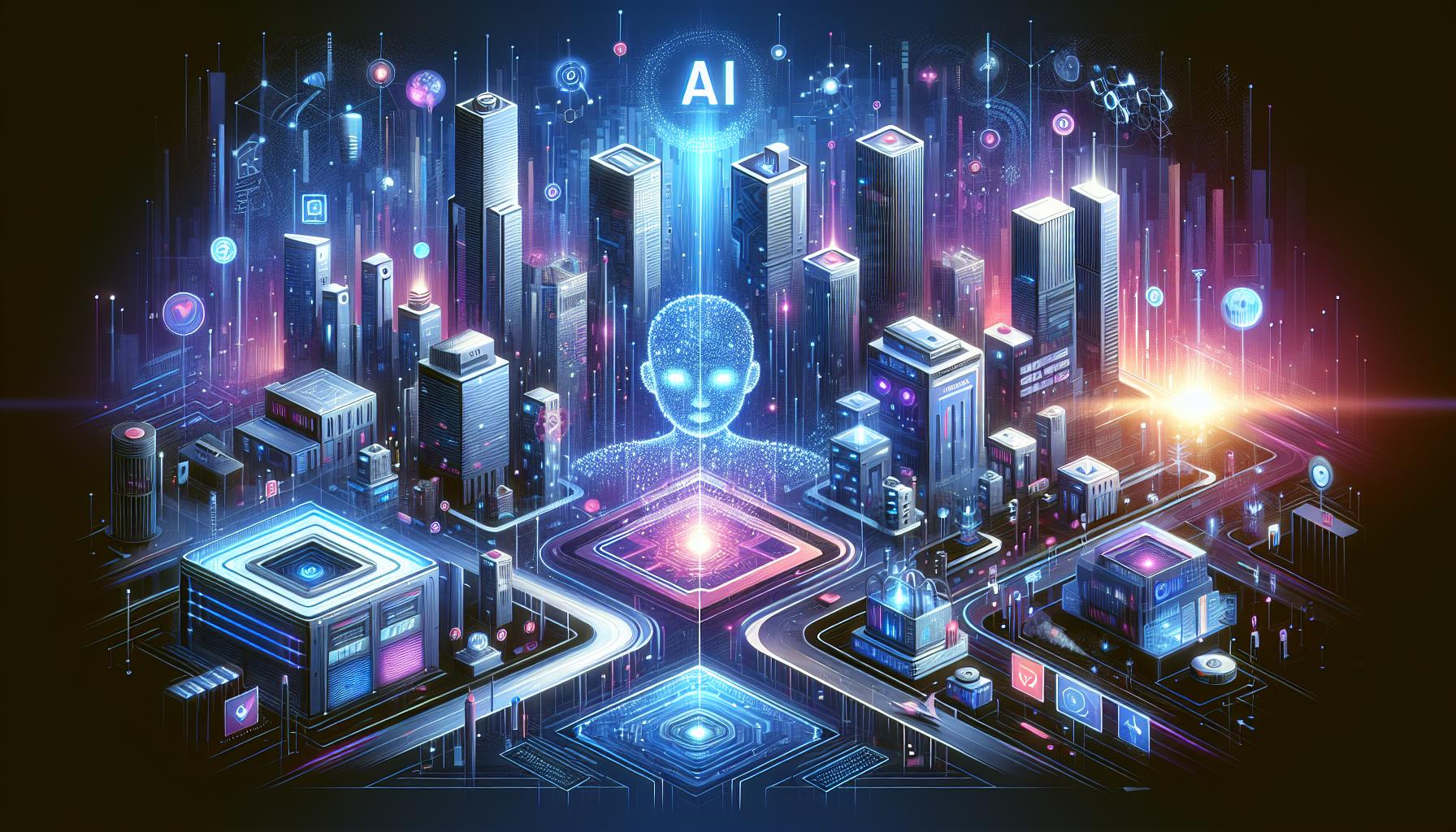The AI Revolution: Transforming Data Centres and the Digital Landscape

Introduction
Artificial Intelligence (AI) is not just another buzzword in technology; it is an evolving force that is changing the landscape of various industries at an unprecedented pace. Reports project that the AI market will reach an astounding value of $2-4 trillion USD by 2030. This growth trajectory is exemplified by applications like ChatGPT, which achieved a million users in just five days—a milestone that took platforms like Netflix years to reach. Data centres play a pivotal role in supporting this rapid advancement in AI technology.
The Evolution of Data Centres
Data centres have transformed from basic storage facilities to complex ecosystems integral for handling AI's computational demands. Originally designed to store vast amounts of data, today's data centres are equipped with advanced computational resources to handle AI tasks such as machine learning, natural language processing, and data analysis.
The Vital Role of Processors in AI Operations
The backbone of any AI operation within a data centre involves three types of processors: Graphics Processing Units (GPUs), Central Processing Units (CPUs), and Tensor Processing Units (TPUs). Each of these has a critical role to play in improving the efficiency of AI processes.
Graphics Processing Units (GPUs)
GPUs are designed for parallel processing, making them particularly effective for training AI models. Unlike CPUs, which are designed to perform a wide range of tasks, GPUs are optimized for the simultaneous processing of numerous data points, essential for AI operations that require handling large datasets.
Central Processing Units (CPUs)
CPUs offer flexibility and versatility, acting as the general-purpose workhorse of the data centre. They handle a variety of tasks including data preprocessing and executing AI algorithms. Although not as specialized as GPUs, CPUs are crucial for managing diverse workloads and are often used in conjunction with GPUs to provide balanced computational power.
Tensor Processing Units (TPUs)
Developed by Google, TPUs are specialized processors designed specifically for AI workloads. They offer high throughput for compute-intensive AI tasks, outperforming GPUs and CPUs in specific scenarios. TPUs are often used in applications that require high levels of computational accuracy and efficiency.
Challenges in Transforming Data Centres for AI
The shift to AI-centric data centres brings several challenges, particularly regarding power supply, connectivity, and cooling systems.
Power Supply
AI applications require high-performance infrastructure, which translates to increased power consumption. Reliable and ample power supply becomes crucial to support the continuous operation of AI workloads. This situation necessitates sophisticated power management strategies to ensure sustainable energy use.
Connectivity
High-speed, low-latency networks are vital for the seamless transfer of data and efficient communication between AI systems. The success of AI operations relies heavily on robust connectivity solutions that can meet the demands of rapid data transmission.
Cooling Systems
AI workloads generate substantial heat, putting a strain on cooling systems. Traditional cooling methods often prove inadequate, requiring the adoption of advanced cooling technologies like liquid cooling or immersion cooling to maintain optimal operational temperatures.
Environmental Impact and Mitigation Strategies
The increased power and cooling requirements of AI-integrated data centres have significant environmental impacts. The demand for higher electricity consumption and sophisticated cooling solutions can lead to greater carbon footprints. However, there are several strategies to mitigate these effects.
Renewable Energy Sources
Data centres can reduce their environmental impact by leveraging renewable energy sources such as wind, solar, and hydroelectric power. Several tech giants are already committing to fully renewable energy operations, setting an industry standard for sustainability.
Energy-Efficient Hardware
Investing in energy-efficient hardware can significantly reduce electricity consumption. Innovations like low-power processors and high-efficiency cooling systems can contribute to a more sustainable data centre ecosystem.
Regulatory Changes Impact
The EU's AI Act and the NIS2 Directive represent significant regulatory milestones, each having profound implications for data centres and their operations.
The EU's AI Act
Under this act, AI applications are categorized based on risk levels: unacceptable, high, limited, and minimal or no risk. This classification will influence how data centres build and maintain their AI capabilities, ensuring they comply with regulatory standards while fostering innovation.
NIS2 Directive
The NIS2 Directive expands digital security regulations, imposing a new layer of compliance requirements for data centres. These policies mandate stringent cybersecurity measures to protect data integrity and support the secure deployment of AI technologies.
Future of Data Centres
As AI continues to evolve, the synergy between AI and data centres will intensify, leading to continuous advancements and mutual influence. The essential role of data centres in this technological revolution cannot be overstated, as they provide the backbone needed for AI to flourish.
Upcoming Data Centres Expo Europe
The upcoming Data Centres Expo Europe event will serve as a hub for discussing the future of this sector. Topics will include AI-ready infrastructures, scalability, sustainability, and optimal hardware solutions. Attendees will gain valuable insights from industry experts and have the opportunity to network with leaders in the field, further shaping the trajectory of data centres in an AI-driven world.
Conclusion
The integration of AI into various sectors is revolutionizing both work and leisure, and data centres are central to this transformation. By understanding the roles of GPUs, CPUs, TPUs, and the challenges they present, as well as the regulatory and environmental implications, we can better prepare for a future where AI and data centres work seamlessly together to drive innovation forward.




